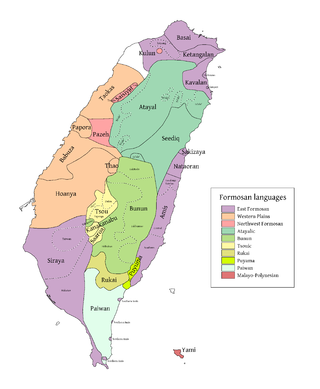Kulon language
 From Wikipedia the free encyclopedia
From Wikipedia the free encyclopedia
| Kulon | |
|---|---|
| Native to | Taiwan |
| Extinct | (date missing) |
| Language codes | |
| ISO 639-3 | uon |
| Glottolog | kulo1238 |
 (pink, northwest) Saisiyat, Pazeh and Kulon. Some Chinese-language sources designate the white area in the northwest as a Kulon area, as opposed to the small pink circle on this map.[1] | |
Kulon (occasionally rendered Kulun) is an extinct language of the Taiwanese aboriginal people that belonged to the Austronesian language family. Very little data is available for Kulon; the primary source is the 60 pages of Tsuchida (1985).[2] Li (2008) follows Tsuchida in linking Kulon with Saisiyat,[3] while Blust (1999) proposes it was more closely related to Pazeh.[4]
References[edit]
- ^ "Táiwān yuánzhùmín píngpǔ zúqún bǎinián fēnlèi shǐ xìliè dìtú" 臺灣原住民平埔族群百年分類史系列地圖 [A History of the Classification of Plains Taiwanese Tribes Over the Past Century]. blog.xuite.net (in Chinese). 6 August 2009. Retrieved 4 March 2017.
- ^ Shigeru Tsuchida (1985) Kulon: Yet another Austronesian language in Taiwan? Bulletin of the Institute of Ethnology, 60: 1–59.
- ^ Li, Paul Jen-kuei (2008). "Time perspective of Formosan Aborigines". In Sanchez-Mazas, Alicia; Blench, Roger; Ross, Malcolm D.; Peiros, Ilia; Lin, Marie (eds.). Past human migrations in East Asia: matching archaeology, linguistics and genetics. London: Routledge. pp. 211–218.
- ^ Blust, Robert (1999). "Subgrouping, circularity and extinction: some issues in Austronesian comparative linguistics". In Zeitoun, E.; Li, P.J.K (eds.). Selected papers from the Eighth International Conference on Austronesian Linguistics. Taipei: Academia Sinica. pp. 31–94.